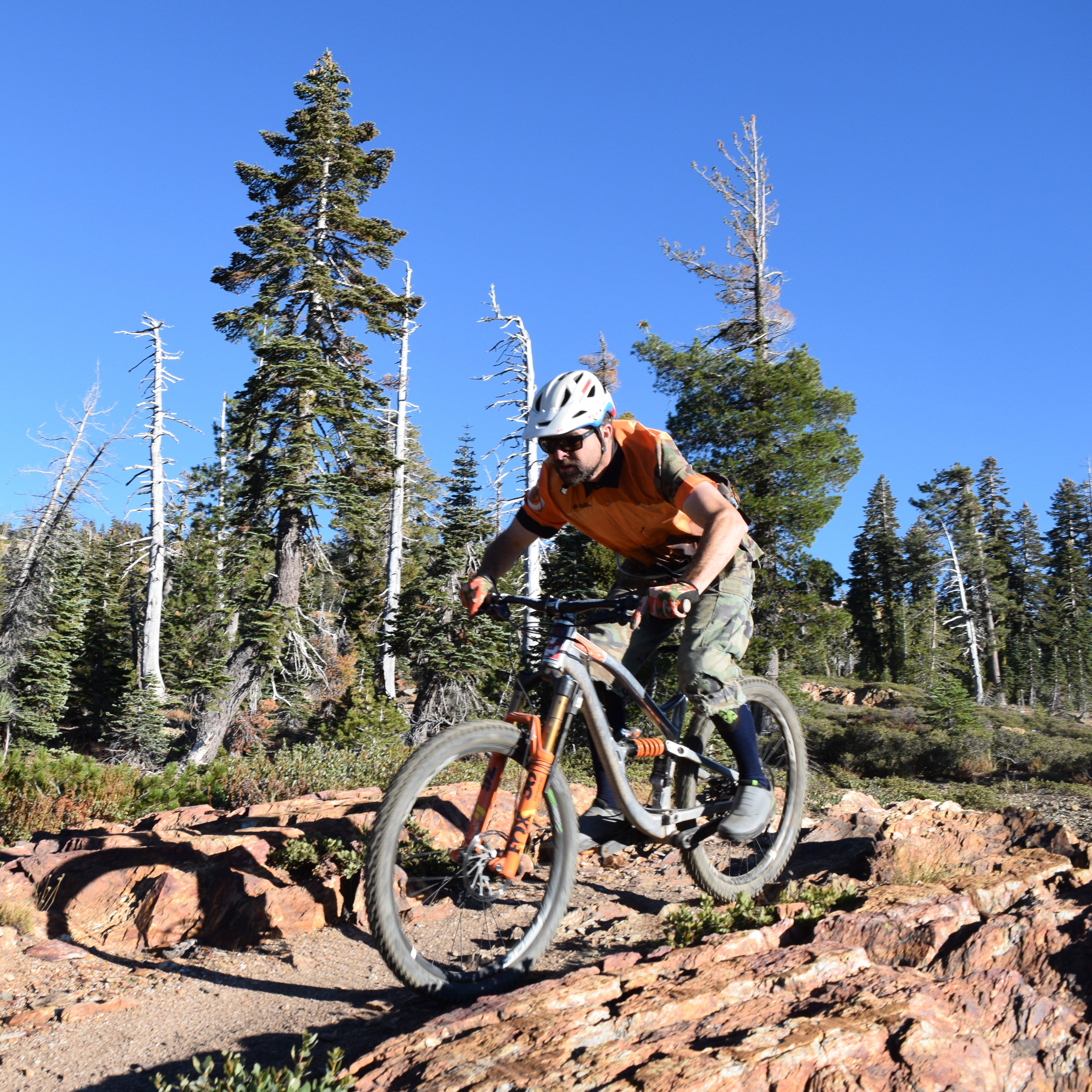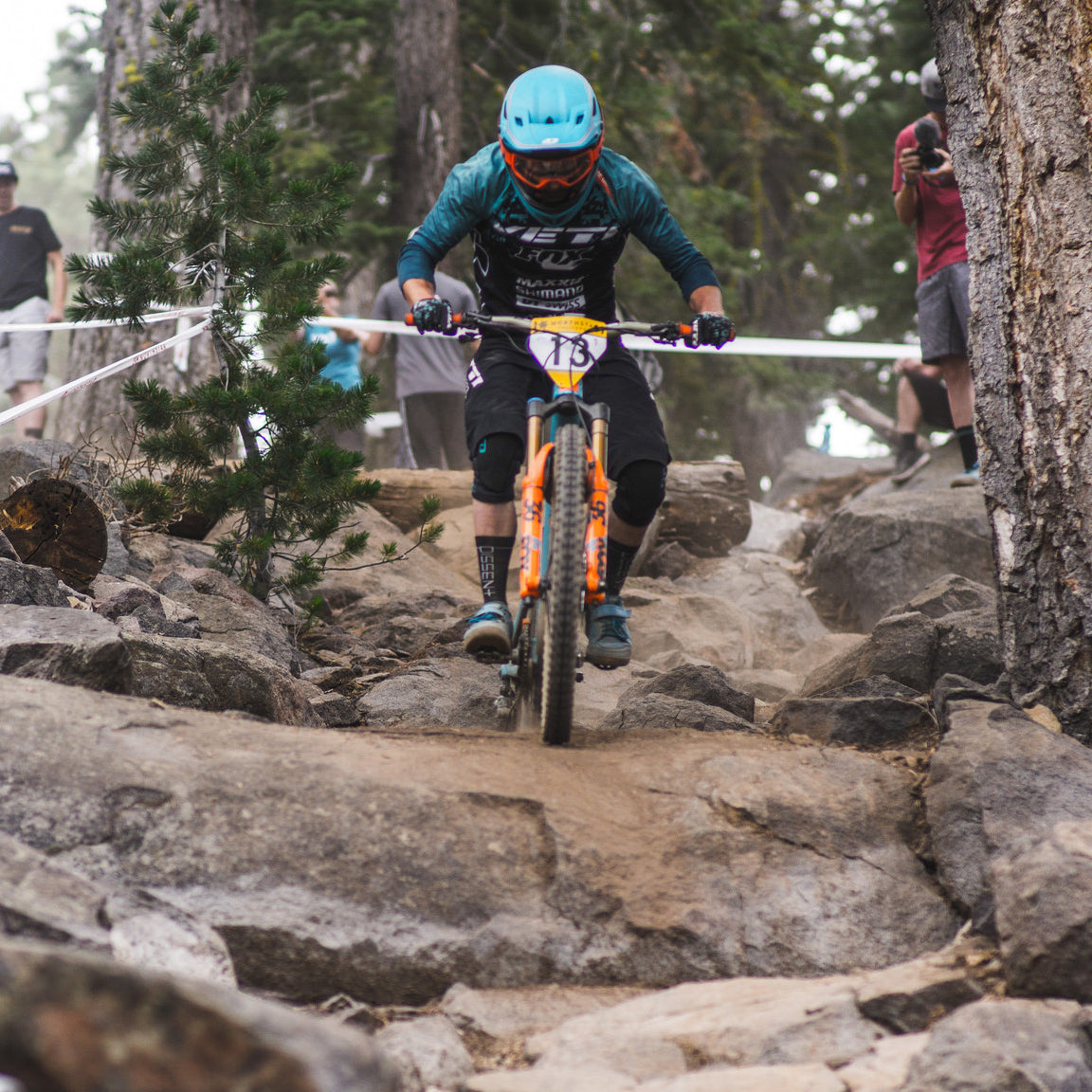After 3 years developing this system, we feel like we have riding buddies all over the world. We could drop into any country, send an email, and meet up with someone we virtually know, but have never met. Jono is one of these individuals. We’ve interacted with Jono for a while and have gotten to know him. He’s based in New Zealand in Rotoura. He’s been working with suspension for a long time and has incorporated data into his offering for a while. He contacted us a while back and we got him a system. We wanted to learn from experts like Jono so we could further improve our product. Here is a quick interview with Jono.
How did you get into mountain biking and what led you into becoming a suspension expert?
My parents got me a mountain bike when I was 10 and dad would take me out to the forest, then when I reached high school some of my friends were into it so I stepped up to a new bike with basic front suspension, v-brakes and 24-speeds! Been pretty much obsessed with it for close to 20 years now. I’ve always been curious and enjoyed tinkering so suspension naturally took my interest. In 2009 I became the NZ tech for Marzocchi which was a massive learning experience so I learnt a ton from working on it everyday plus I was regularly working with top riders like Matt Scoles, Brook Macdonald and Kelly McGarry (RIP) so they really opened my eyes to the different kinds of forces those guys can put through a bike. Later I ended back in a shop but continued doing a lot of suspension work. I started seeing more and more riders looking to get more out of their bikes, or not being totally stoked on the expensive bike they bought due to suspension issues that couldn’t be solved with the available knowledge at the time. That is what led me to starting my own business focused on suspension where I could find the best ways to get the full potential from any bike.
Tell us about your business and how long have you been at it?
The Suspension Lab is 100% suspension oriented as you can guess from the name, so I do everything I can to have all the tools to make suspension better. I do general servicing, upgrades, modifications and custom valving. I bought a dyno and got in to data right from the get go so I could learn more about how bikes and suspension work and make much more informed decisions rather than guessing.
Who are your customers?
All kinds of people- riders that want to make their bike last longer, riders that would like their season or two old bike to work better but can’t afford a new one, people that buy a new bike and don’t feel they are getting out of it what they expected for the price, lots of kids and lightweight rider or just anyone that wants the absolute best possible.
Has there been a lot of interest about using data to help in suspension setup?
Yes, a lot of people have various struggles so see data as a good way to solve them. And a lot of people want to geek out, which is part of the fun!
What are the top things people are most confused about with bike setup?
I would say they don’t follow a logical procedure and think that for any given problem there is ONE correct solution, eg if it feels harsh then you must make everything softer, or if you are being bucked slow the rebound down. They don’t realize tire pressure plays a huge role in suspension, and that regular servicing makes a huge difference too. The friction alone is a huge contributor to the “damping” you feel from a fork, so if you deal with those 2 before getting too carried away with turning knobs you would find most of your issues are resolved pretty quickly.
What is your process for setting up a bike?

Make sure tires are at an appropriate pressure and they know to check them, I also like to check if its been serviced as a sticky old fork will be heavily compromised. Then I start with sag, which can be anywhere between 20 and 30% depending on the bike or go with recommended figures (in the case of the fork). As a rough guide I start with HSR (if they have it) at the recommended no. of clicks then set LSR so if you drop your weight on the seat it will bounce once or twice before settling. LSC I will leave open until the end or if there is a specific stability issue to resolve. At that point I will send them out onto the trail to see if the pressures are working well then recommend bracketing the HSC. Volume spacers will either be installed early on if I know the frame lacks progression, or based on feedback if they feel like it's blowing through too much or riding low.
How did you hear about Motion Instruments?
Being a tech dork, I spotted it on Greg Minnaar’s bike a couple of years ago and thought “WHAT IS THAT?!” as I was actively looking at data systems around that time. I think Vital did a feature on it later where I learned the name and decided to keep an eye on the progress after that.

Have you used data in the past? What did you like or dislike about those products?
I bought one of the motorsports-style systems and used it a lot. I learnt a huge amount with it and the amount of data you can get is almost unlimited, but it is very complicated to install and process everything. You need to be able to make your own math channels and filter it all out which can be very slow. So the upside is you can compare just about any metric you can think of, but the downside is a huge potential to get lost in all the data or just straight up make mistakes.
Has MI had an impact on advancing your knowledge of bike setup?
Yes being able to view data so quickly and have a useful way to compare front and rear means I can see how different riders distribute their weight and use each end differently. You can also see how something that might seem really hard or soft in the carpark is actually working really well on the trail.
What about rider feedback after a session with you & MI data?
They are always really pleased with the level of improvement, how much more balanced and in control the bike feels, and how the changes were often not what they expected to need.

Any negative feedback on the system or what could be improved?
Not a lot, maybe a specific way to compare 2 runs of the same track back to back in more detail.
MI: Noted! We really like the A/B comparison that LitPro has created in their system.
Will you expand your service to others that are not in your backyard?
Very likely, the system works so well remotely with its cloud-based data storage that I don’t see why I couldn’t work with riders on the other side of the world!
What are you excited about with the potential of this system with your business?
Being able to confidently tune anyone’s bike to a much higher level than before in less time, and getting better insights into how a bike is working under the smallest and largest, or fastest and cruisiest riders.
Conclusion
This is exactly why we created our product, to further advance the service an expert can provide their customers. Our intention with this product was never to say “set up your bike like this” and your problems will go away. Bike setup is a science. Using our bike-rider-terrain specific data along with the expertise of Jono will unleash your bike’s potential. When Jono tears apart your suspension to re-valve, he will have data specific to you in hand with predetermined goals for the build.
Jono’s Contact Info:
A: 1142 Pukuatua Street, Rotorua, New Zealand
E: jono@thesuspensionlab.nz
P: 07 343 6163
M: 027 258 2864




1 comment
Richard
Hi
Looking for someone in Vancouver Island, BC area that is set up with Motion IQ coach
Hi
Looking for someone in Vancouver Island, BC area that is set up with Motion IQ coach